Aristotelis Ballas
Gradient-Guided Annealing for Domain Generalization
Feb 27, 2025Abstract:Domain Generalization (DG) research has gained considerable traction as of late, since the ability to generalize to unseen data distributions is a requirement that eludes even state-of-the-art training algorithms. In this paper we observe that the initial iterations of model training play a key role in domain generalization effectiveness, since the loss landscape may be significantly different across the training and test distributions, contrary to the case of i.i.d. data. Conflicts between gradients of the loss components of each domain lead the optimization procedure to undesirable local minima that do not capture the domain-invariant features of the target classes. We propose alleviating domain conflicts in model optimization, by iteratively annealing the parameters of a model in the early stages of training and searching for points where gradients align between domains. By discovering a set of parameter values where gradients are updated towards the same direction for each data distribution present in the training set, the proposed Gradient-Guided Annealing (GGA) algorithm encourages models to seek out minima that exhibit improved robustness against domain shifts. The efficacy of GGA is evaluated on five widely accepted and challenging image classification domain generalization benchmarks, where its use alone is able to establish highly competitive or even state-of-the-art performance. Moreover, when combined with previously proposed domain-generalization algorithms it is able to consistently improve their effectiveness by significant margins.
CycleMix: Mixing Source Domains for Domain Generalization in Style-Dependent Data
Jul 18, 2024Abstract:As deep learning-based systems have become an integral part of everyday life, limitations in their generalization ability have begun to emerge. Machine learning algorithms typically rely on the i.i.d. assumption, meaning that their training and validation data are expected to follow the same distribution, which does not necessarily hold in practice. In the case of image classification, one frequent reason that algorithms fail to generalize is that they rely on spurious correlations present in training data, such as associating image styles with target classes. These associations may not be present in the unseen test data, leading to significant degradation of their effectiveness. In this work, we attempt to mitigate this Domain Generalization (DG) problem by training a robust feature extractor which disregards features attributed to image-style but infers based on style-invariant image representations. To achieve this, we train CycleGAN models to learn the different styles present in the training data and randomly mix them together to create samples with novel style attributes to improve generalization. Experimental results on the PACS DG benchmark validate the proposed method.
On the Out-Of-Distribution Robustness of Self-Supervised Representation Learning for Phonocardiogram Signals
Dec 01, 2023Abstract:Objective: Despite the recent increase in research activity, deep-learning models have not yet been widely accepted in medicine. The shortage of high-quality annotated data often hinders the development of robust and generalizable models, which do not suffer from degraded effectiveness when presented with newly-collected, out-of-distribution (OOD) datasets. Methods: Contrastive Self-Supervised Learning (SSL) offers a potential solution to the scarcity of labeled data as it takes advantage of unlabeled data to increase model effectiveness and robustness. In this research, we propose applying contrastive SSL for detecting abnormalities in phonocardiogram (PCG) samples by learning a generalized representation of the signal. Specifically, we perform an extensive comparative evaluation of a wide range of audio-based augmentations and evaluate trained classifiers on multiple datasets across different downstream tasks. Results: We experimentally demonstrate that, depending on its training distribution, the effectiveness of a fully-supervised model can degrade up to 32% when evaluated on unseen data, while SSL models only lose up to 10% or even improve in some cases. Conclusions: Contrastive SSL pretraining can assist in providing robust classifiers which can generalize to unseen, OOD data, without relying on time- and labor-intensive annotation processes by medical experts. Furthermore, the proposed extensive evaluation protocol sheds light on the most promising and appropriate augmentations for robust PCG signal processing. Significance: We provide researchers and practitioners with a roadmap towards producing robust models for PCG classification, in addition to an open-source codebase for developing novel approaches.
Multi-Scale and Multi-Layer Contrastive Learning for Domain Generalization
Aug 28, 2023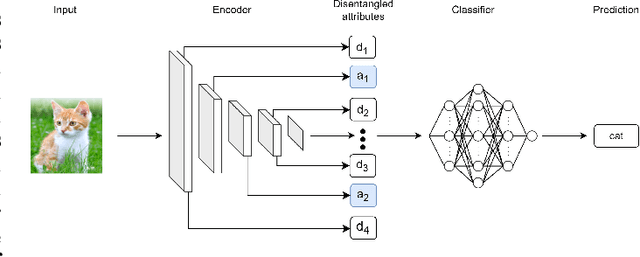

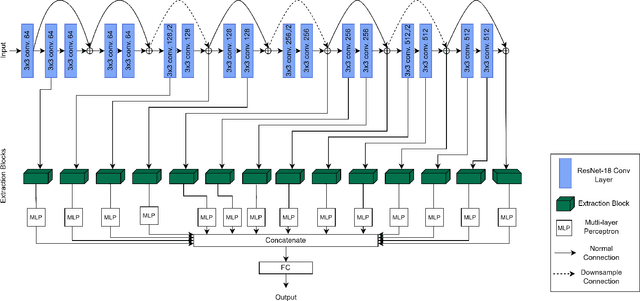
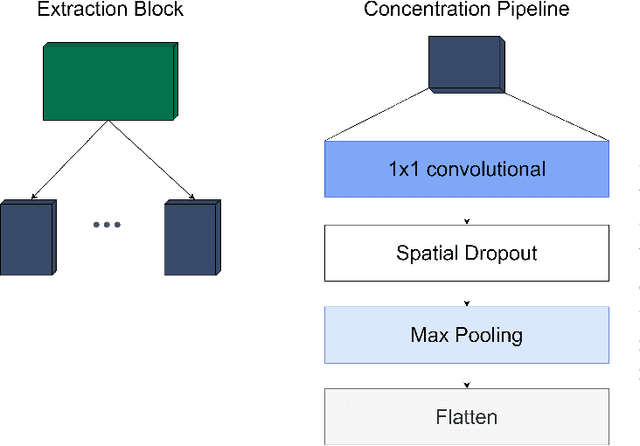
Abstract:During the past decade, deep neural networks have led to fast-paced progress and significant achievements in computer vision problems, for both academia and industry. Yet despite their success, state-of-the-art image classification approaches fail to generalize well in previously unseen visual contexts, as required by many real-world applications. In this paper, we focus on this domain generalization (DG) problem and argue that the generalization ability of deep convolutional neural networks can be improved by taking advantage of multi-layer and multi-scaled representations of the network. We introduce a framework that aims at improving domain generalization of image classifiers by combining both low-level and high-level features at multiple scales, enabling the network to implicitly disentangle representations in its latent space and learn domain-invariant attributes of the depicted objects. Additionally, to further facilitate robust representation learning, we propose a novel objective function, inspired by contrastive learning, which aims at constraining the extracted representations to remain invariant under distribution shifts. We demonstrate the effectiveness of our method by evaluating on the domain generalization datasets of PACS, VLCS, Office-Home and NICO. Through extensive experimentation, we show that our model is able to surpass the performance of previous DG methods and consistently produce competitive and state-of-the-art results in all datasets.
CNN Feature Map Augmentation for Single-Source Domain Generalization
May 26, 2023
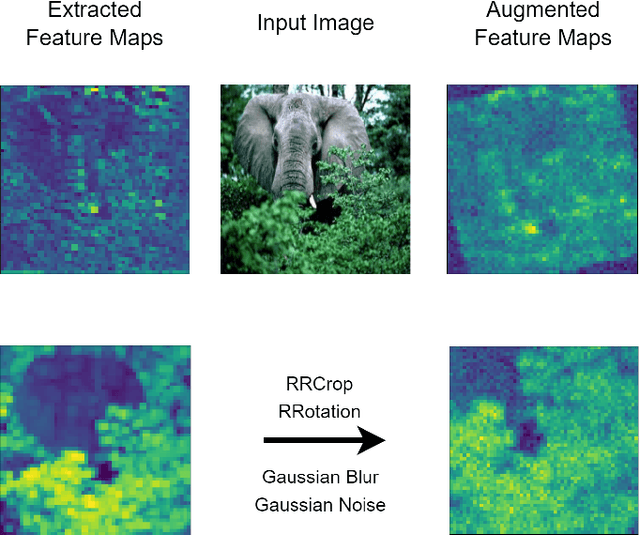
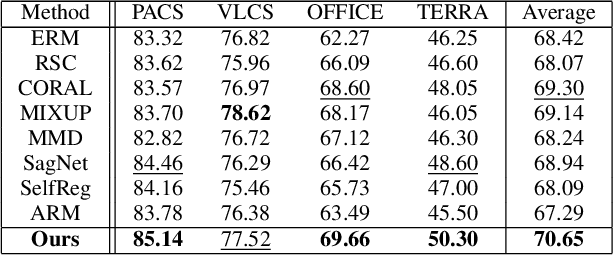
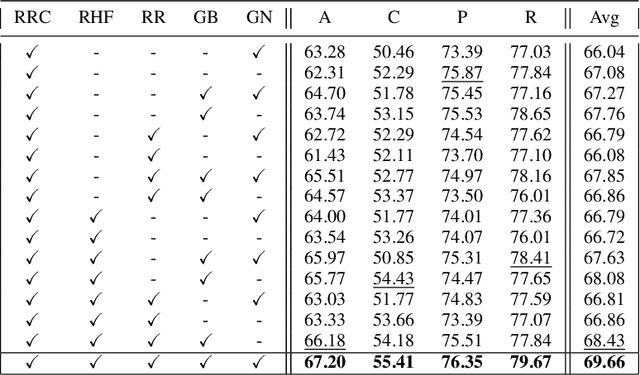
Abstract:In search of robust and generalizable machine learning models, Domain Generalization (DG) has gained significant traction during the past few years. The goal in DG is to produce models which continue to perform well when presented with data distributions different from the ones seen during training. While deep convolutional neural networks (CNN) have been able to achieve outstanding performance on downstream computer vision tasks, they still often fail to generalize on previously unseen data Domains. Therefore, in this work we focus on producing a model which is able to remain robust under data distribution shift and propose an alternative regularization technique for convolutional neural network architectures in the single-source DG image classification setting. To mitigate the problem caused by domain shift between source and target data, we propose augmenting intermediate feature maps of CNNs. Specifically, we pass them through a novel Augmentation Layer to prevent models from overfitting on the training set and improve their cross-domain generalization. To the best of our knowledge, this is the first paper proposing such a setup for the DG image classification setting. Experiments on the DG benchmark datasets of PACS, VLCS, Office-Home and TerraIncognita validate the effectiveness of our method, in which our model surpasses state-of-the-art algorithms in most cases.
CNNs with Multi-Level Attention for Domain Generalization
Apr 02, 2023Abstract:In the past decade, deep convolutional neural networks have achieved significant success in image classification and ranking and have therefore found numerous applications in multimedia content retrieval. Still, these models suffer from performance degradation when neural networks are tested on out-of-distribution scenarios or on data originating from previously unseen data Domains. In the present work, we focus on this problem of Domain Generalization and propose an alternative neural network architecture for robust, out-of-distribution image classification. We attempt to produce a model that focuses on the causal features of the depicted class for robust image classification in the Domain Generalization setting. To achieve this, we propose attending to multiple-levels of information throughout a Convolutional Neural Network and leveraging the most important attributes of an image by employing trainable attention mechanisms. To validate our method, we evaluate our model on four widely accepted Domain Generalization benchmarks, on which our model is able to surpass previously reported baselines in three out of four datasets and achieve the second best score in the fourth one.
Towards Domain Generalization for ECG and EEG Classification: Algorithms and Benchmarks
Mar 20, 2023Abstract:Despite their immense success in numerous fields, machine and deep learning systems have not have not yet been able to firmly establish themselves in mission-critical applications in healthcare. One of the main reasons lies in the fact that when models are presented with previously unseen, Out-of-Distribution samples, their performance deteriorates significantly. This is known as the Domain Generalization (DG) problem. Our objective in this work is to propose a benchmark for evaluating DG algorithms, in addition to introducing a novel architecture for tackling DG in biosignal classification. In this paper, we describe the Domain Generalization problem for biosignals, focusing on electrocardiograms (ECG) and electroencephalograms (EEG) and propose and implement an open-source biosignal DG evaluation benchmark. Furthermore, we adapt state-of-the-art DG algorithms from computer vision to the problem of 1D biosignal classification and evaluate their effectiveness. Finally, we also introduce a novel neural network architecture that leverages multi-layer representations for improved model generalizability. By implementing the above DG setup we are able to experimentally demonstrate the presence of the DG problem in ECG and EEG datasets. In addition, our proposed model demonstrates improved effectiveness compared to the baseline algorithms, exceeding the state-of-the-art in both datasets. Recognizing the significance of the distribution shift present in biosignal datasets, the presented benchmark aims at urging further research into the field of biomedical DG by simplifying the evaluation process of proposed algorithms. To our knowledge, this is the first attempt at developing an open-source evaluation framework for evaluating ECG and EEG DG algorithms.
Listen to your heart: A self-supervised approach for detecting murmur in heart-beat sounds for the Physionet 2022 challenge
Aug 31, 2022

Abstract:Heart murmurs are abnormal sounds present in heartbeats, caused by turbulent blood flow through the heart. The PhysioNet 2022 challenge targets automatic detection of murmur from audio recordings of the heart and automatic detection of normal vs. abnormal clinical outcome. The recordings are captured from multiple locations around the heart. Our participation investigates the effectiveness of self-supervised learning for murmur detection. We evaluate the use of a backbone CNN, whose layers are trained in a self-supervised way with data from both this year's and the 2016 challenge. We use two different augmentations on each training sample, and normalized temperature-scaled cross-entropy loss. We experiment with different augmentations to learn effective phonocardiogram representations. To build the final detectors we train two classification heads, one for each challenge task. We present evaluation results for all combinations of the available augmentations, and for our multiple-augmentation approach.
A Domain Generalization Approach for Out-Of-Distribution 12-lead ECG Classification with Convolutional Neural Networks
Aug 20, 2022


Abstract:Deep Learning systems have achieved great success in the past few years, even surpassing human intelligence in several cases. As of late, they have also established themselves in the biomedical and healthcare domains, where they have shown a lot of promise, but have not yet achieved widespread adoption. This is in part due to the fact that most methods fail to maintain their performance when they are called to make decisions on data that originate from a different distribution than the one they were trained on, namely Out-Of-Distribution (OOD) data. For example, in the case of biosignal classification, models often fail to generalize well on datasets from different hospitals, due to the distribution discrepancy amongst different sources of data. Our goal is to demonstrate the Domain Generalization problem present between distinct hospital databases and propose a method that classifies abnormalities on 12-lead Electrocardiograms (ECGs), by leveraging information extracted across the architecture of a Deep Neural Network, and capturing the underlying structure of the signal. To this end, we adopt a ResNet-18 as the backbone model and extract features from several intermediate convolutional layers of the network. To evaluate our method, we adopt publicly available ECG datasets from four sources and handle them as separate domains. To simulate the distributional shift present in real-world settings, we train our model on a subset of the domains and leave-out the remaining ones. We then evaluate our model both on the data present at training time (intra-distribution) and the held-out data (out-of-distribution), achieving promising results and surpassing the baseline of a vanilla Residual Network in most of the cases.
Multi-layer Representation Learning for Robust OOD Image Classification
Jul 27, 2022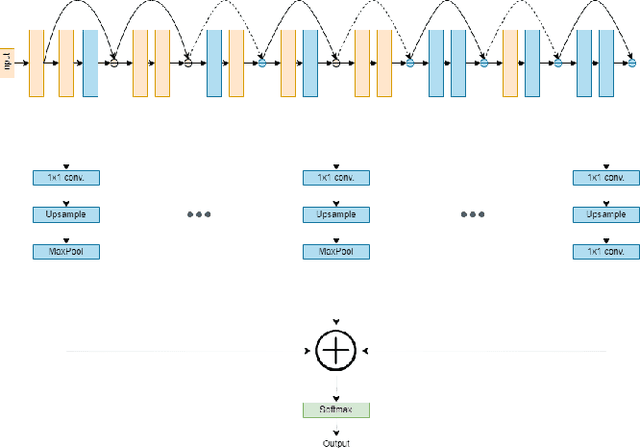
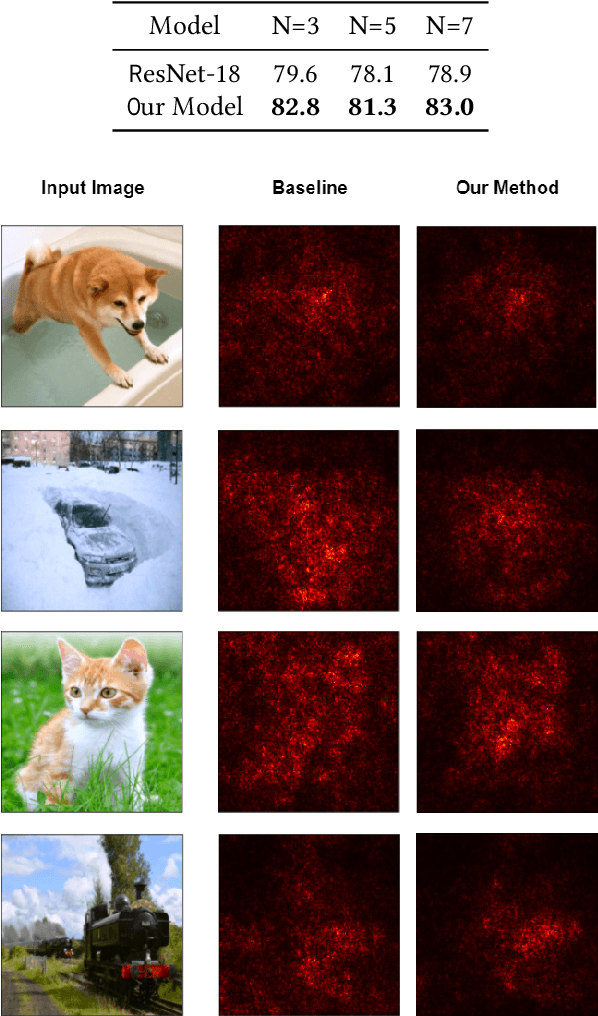
Abstract:Convolutional Neural Networks have become the norm in image classification. Nevertheless, their difficulty to maintain high accuracy across datasets has become apparent in the past few years. In order to utilize such models in real-world scenarios and applications, they must be able to provide trustworthy predictions on unseen data. In this paper, we argue that extracting features from a CNN's intermediate layers can assist in the model's final prediction. Specifically, we adapt the Hypercolumns method to a ResNet-18 and find a significant increase in the model's accuracy, when evaluating on the NICO dataset.
 Add to Chrome
Add to Chrome Add to Firefox
Add to Firefox Add to Edge
Add to Edge